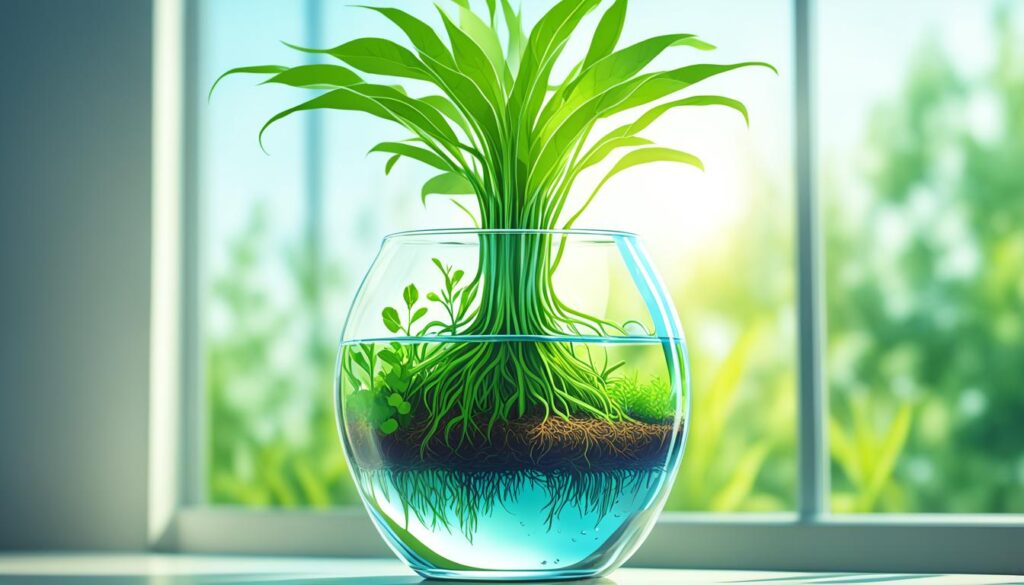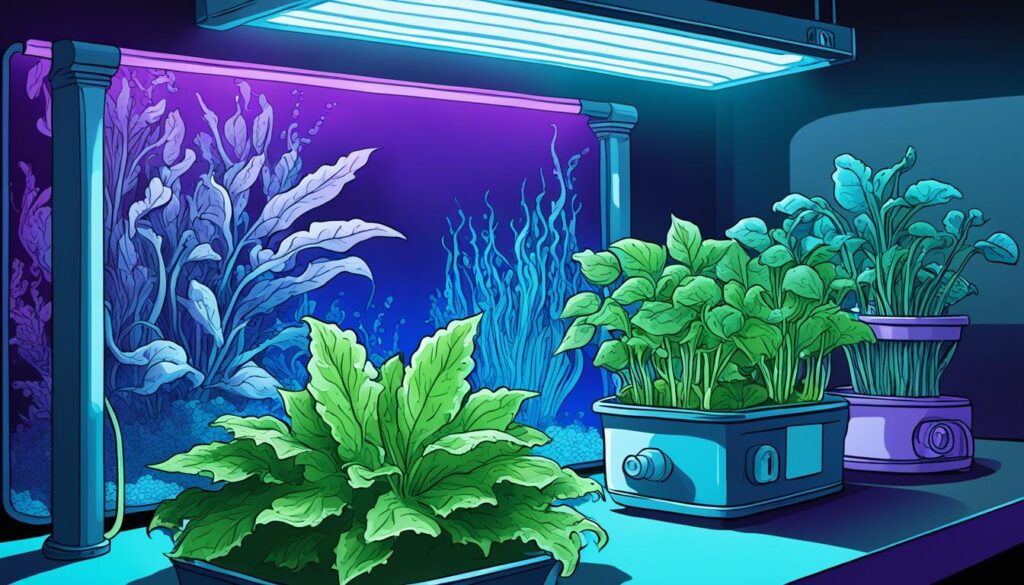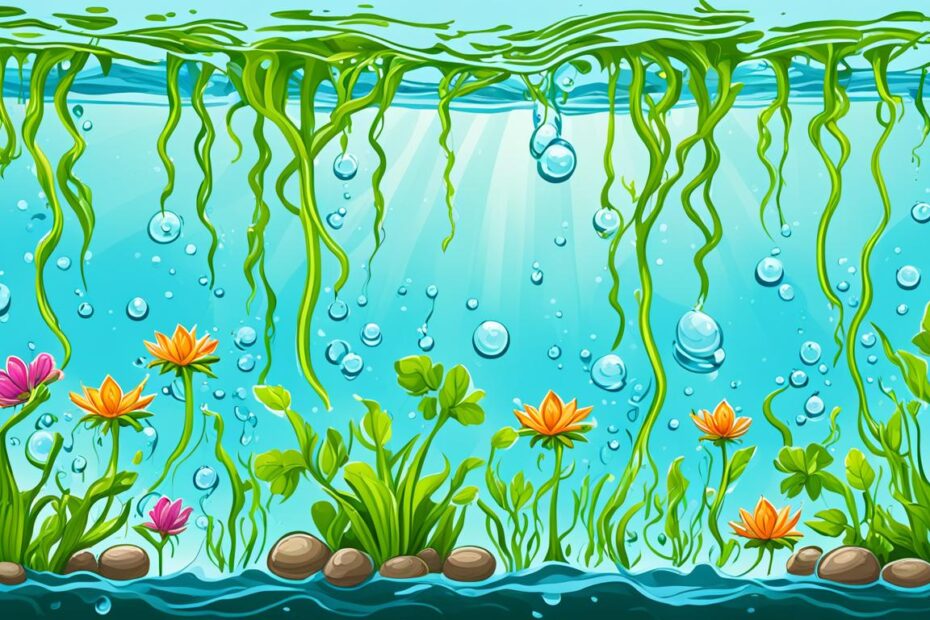Have you ever wondered if you could grow outdoor plants without the hassle of soil? Well, the good news is that it’s possible! In fact, some plants actually thrive in water alone. Imagine having a lush garden with vibrant greenery, without having to worry about soil quality or watering schedules. Sounds intriguing, right? Let’s explore the fascinating world of growing outdoor plants in water and discover the secret to their success.
**Key Takeaways:**
– Growing outdoor plants in water is a low-maintenance alternative to traditional gardening methods.
– Hydroponics, the practice of growing plants in water, offers numerous benefits including consistent moisture levels and reduced risk of pests.
– You can start growing plants in water with either fully-grown plants or cuttings.
– Various water vessels such as glass bottles, jars, and vases can be used for growing plants in water.
– Tap water can be used for hydroponics, but certain considerations need to be made to ensure optimal plant health.
The Benefits of Growing Plants in Water
Growing plants in water, also known as hydroponics, offers several benefits. Firstly, the risk of overwatering or underwatering is eliminated, as the roots are constantly submerged in water. This makes it easier to maintain consistent moisture levels, preventing wilting or root rot.
“Hydroponics provides a controlled environment that ensures optimal growing conditions for your plants. You can say goodbye to the stress of trying to gauge the right amount of water for your plants, as hydroponics takes care of this for you.”
Secondly, growing plants in water eliminates the need for traditional soil, reducing the risk of pests and diseases. Many gardeners struggle with soil-related issues such as soil-borne pathogens, weeds, and poor drainage. By growing plants in water, you can create a clean and sterile environment for your plants, free from soil-borne problems.
Hydroponic setups also allow you to grow plants indoors, making it a convenient option for those with limited outdoor space or unfavorable weather conditions. With the right setup, you can enjoy the beauty of lush greenery in your home all year round.
Furthermore, hydroponic plants can be grown indefinitely, allowing you to witness the fascinating sight of their thriving roots. This not only adds to the aesthetic appeal but also provides an opportunity to monitor root health. You can easily identify any root-related issues and take prompt action to ensure the longevity of your plants.
Growing plants in water offers a unique and rewarding gardening experience that is not only visually appealing but also low maintenance. With hydroponics, you can create a vibrant and thriving indoor garden without the hassle of soil-based care.
| Benefits of Growing Plants in Water |
|---|
| Eliminates the risk of overwatering or underwatering |
| Reduces the risk of pests and diseases |
| Allows for indoor plant cultivation |
| Enables continuous monitoring of root health |
| Offers a visually appealing and low-maintenance gardening experience |
Testimonials
“I never thought I could grow plants without soil, but hydroponics has completely changed my perspective. Not only are my plants thriving, but they also require minimal care. It’s a game-changer!” – Sarah
“As a busy professional, hydroponics has allowed me to indulge in my love for gardening without worrying about watering schedules and soil maintenance. It’s the perfect solution for my indoor gardening needs.” – Michael

With the numerous benefits it offers, growing plants in water is an innovative and sustainable gardening technique that you should definitely explore. Not only will you enjoy the lush beauty of thriving plants, but you’ll also experience the joy and satisfaction of caring for them in a whole new way.
How to Grow Plants in Water
Growing plants in water is a simple and rewarding process that allows you to enjoy the beauty of nature without the need for soil. Whether you’re starting with a fully-grown plant or a cutting, you can easily create a hydroponic setup in your home. Here’s a step-by-step guide on how to grow plants in water:
Starting with a Cutting
If you’re starting with a cutting, follow these steps:
- Snip off a healthy piece of the plant, making sure it has at least a few leaves.
- Place the cutting in a vase or container filled with water.
- Ensure that the stem is fully submerged in water while keeping the leaves above the water level.
- Choose a container with a wide enough neck to accommodate the plant’s root system.
Using a Fully-Grown Plant
If you have a fully-grown plant that was previously grown in soil, you can easily transfer it to a hydroponic setup:
- Carefully remove the plant from its soil, ensuring you don’t damage the roots.
- Rinse off any excess soil from the roots.
- Place the plant in a container with water, making sure the roots are fully submerged.
- Opt for a container that allows you to observe the root system for maintenance purposes.
When choosing a container for your hydroponic setup, various options offer both functionality and aesthetics. Consider using glass bottles, jars, test tubes, propagation stations, wall vessels, or vases to display your plants in a creative and visually appealing way. Ensure that the container is watertight, preventing any leakage and providing a stable environment for the plants. Additionally, choose a container that allows you to monitor the root system and prevents algae growth.
Water Requirements for Hydroponic Plants
Most hydroponic plants can thrive in any tap water, but there are a few considerations to keep in mind for optimal growth. Quality and composition of water, as well as preventing algae growth, are important factors to consider for the success of your hydroponic garden.
Tap Water Quality
Tap water is typically suitable for hydroponic plants, but there are exceptions. If you have low-quality tap water or use reverse osmosis water, which lacks essential nutrients, it may not provide adequate nourishment for your plants. To ensure your plants receive proper nutrition, consider the following:
- If your tap water contains high levels of chlorine or chloramine, it is advisable to allow it to sit for 24 hours before using it for your hydroponic plants. This allows the chlorine to dissipate.
- Alternatively, you can use a water dechlorinator to neutralize chlorine and chloramine. Follow the instructions on the dechlorinator product for appropriate usage.
Rainwater and most types of bottled water can also be used for hydroponic gardening without any concerns.
Preventing Algae Growth
Algae growth is a common challenge in hydroponic systems, especially in transparent containers. To prevent algae from taking over your plant’s water supply, consider the following steps:
- Avoid placing your hydroponic plants in direct sunlight. Sunlight exposure can stimulate algal growth. Instead, keep them in a shaded area.
- If you prefer to use transparent containers, consider wrapping them in opaque materials, such as aluminum foil or paper, to block the light and discourage algae growth.
- Regularly inspect your hydroponic system and clean the containers if you notice any signs of algae. This will help maintain water quality and prevent any potential harm to your plants.
Remember, the cleanliness and quality of the water you use in your hydroponic system can significantly impact the health and growth of your plants. By taking the necessary precautions and providing suitable conditions, you can ensure the success of your hydroponic garden.

Fertilizing Hydroponic Plants
Although hydroponic plants grow in water, they still require nutrients to thrive. Special fertilizers designed for hydroponic plants are available and should be used according to the instructions on the container.
Generally, lower-strength fertilizers are recommended for hydroponic plants compared to those grown in soil. This is because the plants receive direct access to the nutrients in the water, and excess nutrients can be harmful to their growth. It is important to maintain a balanced nutrient solution to ensure optimal plant health.
When fertilizing hydroponic plants, it is recommended to add fertilizer each time you change the plant’s water, ideally at least once a month. This ensures that the plants receive a fresh supply of nutrients regularly.
Here are some recommended fertilizers for hydroponic plants:
| Fertilizer | Benefits |
|---|---|
| Maxsea All Purpose Hydroponic Nutrient Fertilizer | – Provides a balanced mix of essential nutrients – Promotes healthy growth and development – Suitable for various types of hydroponic plants |
| Hydro-Gro Organic Fish Fertilizer Hydroponics Plant Food | – Made from organic fish emulsion – Rich in nutrients and microorganisms – Promotes strong root development and overall plant health |
| Grow More Lucky Bamboo Fertilizer | – Specifically formulated for lucky bamboo and other hydroponic plants – Provides essential nutrients for lush green growth – Enhances plant resilience and vitality |
Remember to follow the instructions on the fertilizer packaging for the correct dosage and application method. This will ensure that your hydroponic plants receive the necessary nutrients for optimal growth and productivity.
Conclusion
Growing outdoor plants without soil through hydroponic gardening is a revolutionary approach that offers numerous benefits and requires minimal maintenance. By gaining the necessary knowledge and setting up a basic hydroponic system, you can witness the beauty of thriving plants with ease. Whether you are a busy individual or seeking a new gardening experience, hydroponic gardening provides a satisfying and rewarding alternative.
With hydroponics, you have the opportunity to experiment with different plants and containers, allowing for the creation of unique and eye-catching displays in your home or outdoor space. By eliminating the need for soil, you eliminate the risks associated with pests and diseases, giving your plants a healthier environment to grow and flourish.
Enjoy the convenience and beauty of low-maintenance gardening as you discover the wonders of growing outdoor plants in water without soil. Embrace the satisfying experience of hydroponic gardening and watch as your plants thrive, bringing a touch of nature into your life.
FAQ
Are there any benefits to growing plants in water?
Yes, growing plants in water, also known as hydroponics, eliminates the risk of overwatering or underwatering and reduces the risk of pests and diseases. Additionally, hydroponic plants can be grown indefinitely, allowing you to monitor root health.
How do you grow plants in water?
You can start with a fully-grown plant previously grown in soil or with a cutting. For cuttings, place the stem in a vase with the leaves above the water level. Use any watertight container and ensure it has a wide enough neck for the root system. Glass bottles, jars, and drinking glasses work well.
What water should I use for hydroponic plants?
Most hydroponic plants can thrive in tap water. However, if your tap water is low quality or lacks nutrients, it may not provide adequate nourishment. If your tap water is high in chlorine or chloramine, let it sit for 24 hours or use water dechlorinator. Rainwater and most bottled water are also suitable.
How do I prevent algae growth in hydroponic containers?
To prevent algae growth, avoid exposing the plants to direct sunlight or use opaque containers. If algae do occur, they can be easily removed by cleaning the container or covering it to block the light.
Do hydroponic plants require fertilizers?
Yes, hydroponic plants still require nutrients to thrive. Special fertilizers designed for hydroponic plants are available and should be used according to the instructions on the container. Lower-strength fertilizers are generally recommended for hydroponic plants compared to those grown in soil.
